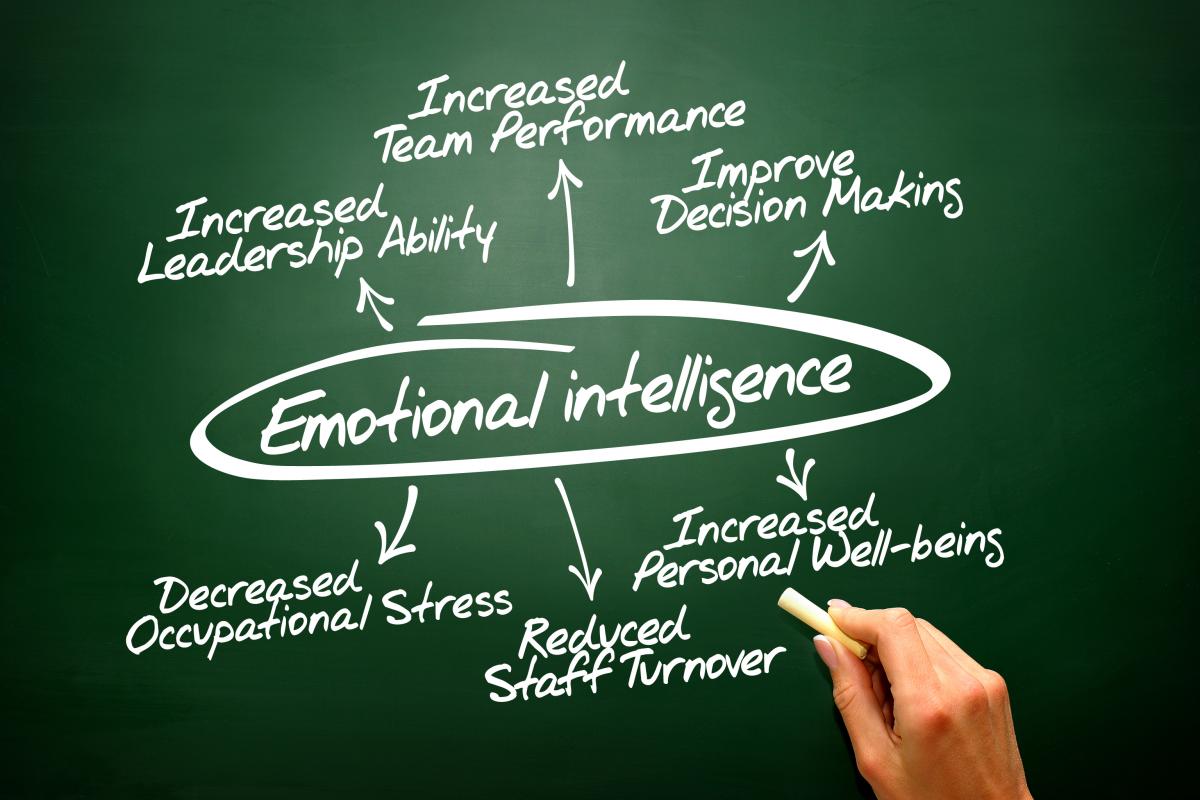
Emotional Intelligence: Data Show it’s a Must-Have for Team Success
“Take a look.”
The leader of an academic and technical group pointed Connect the Dots Managing Director Brenda Hampel to the work area of team members who had just participated in a session with her on emotional intelligence.
What she saw: small groups of team members talking together over and around their cubicles.
“This only happens after one of your sessions,” the team leader told Brenda. “Typically, they are all working independently, using IM to communicate, not talking with one another.
“This is great!”
Emotional Intelligence: A Must-Have Set of Skills
For employees today, it’s not enough to work well independently. You also need to be able to work well as part of a team, and to interact effectively with clients and others. Over the past two decades, time spent in collaborative activities has increased by 50% or more (Cross, Rebele and Grant [2016]).
Emotional intelligence (often referred to as EI, EQ or EIQ) is a critical component for having successful interactions with others. EI, as we will refer to it here, is defined as a set of emotional and social skills that influences the way we perceive and express ourselves, develop and maintain relationships, manage challenges and generally how we “show up” to others.
By the year 2020, states the World Economic Forum, “emotional intelligence will be one of the ‘top 10 must-have skills.’”
Based on the following statistics, that statement actually might understate EI’s importance to career and business success:
- 90% of top performers have high EI
- 58 percent of a worker’s job performance is based on EI
- Professionals with high EI earn 29 percent more than those with low EI
Improving Emotional Intelligence
Despite the business importance of emotional intelligence, EI shortcomings often go unaddressed in the workplace.
Why? Day-to-day priorities and deadlines get in the way, plus managers might not always recognize or know how to address EI problems. Whatever the reason for them, EI issues lead to dysfunction that often is accepted as “the way things are,” even as it causes key objectives to go un-met.
Improving work teams’ emotional intelligence is possible—it’s a matter of teaching team members new skills and having them adapt to their work interactions. Improvement, however, won’t happen unless it’s a priority. Communicating that it’s a priority is one reason why employers bring in consultants like Connect the Dots to help (others include experience with helping teams improve their overall emotional intelligence and the advantages of having unbiased experts conducting assessments).
Now let’s look at some of the key steps for improving work teams’ emotional intelligence. We’ll use the case of the academic technical group to show how these steps helped them develop their relationship and interaction skills and abilities—both internally, as well as with their customers.
Determine the current state. The first step to reach a destination is to know your starting point. In the case of improving a team’s EI, you need to identify the key areas of improvement.
Academic and technical group: Each team member completed an EI assessment and we shared the combined results. This gave members more awareness of the team culture and of how they interact with one another. It also gave them a better understanding of why the team dynamics were the way they were and helped them see the need for and impact of improvements.
Provide situational examples. Telling people “you need to be more emotionally intelligent” doesn’t do them much good. Identifying better practices for specific scenarios helps people see how they can improve those scenarios, but also makes them open to the idea that there are other interpersonal situations they could also handle better.
Academic and technical group: We had team members ask us about situations that they found challenging, questions, and we provided talking points and phrases on how to handle them in an emotionally intelligent way.
One example was: “How do we handle it if a team member is not pulling his weight on a project?”
The talking points included:
- What are the “consequences” of not addressing this issue?
- How do you expect it to change if you don’t address it?
- What do you know about the team member that will be helpful in bringing up the issue? Thinking through what’s important to the team member, how they prefer to communicate and presenting the issue to them in a way that “meets him or her where they are” demonstrates your EI and is much more likely to have a positive outcome.
Another example was: “How do we handle it when a client is not providing us with the information that we need for a project? We have so many projects and I think that it is on the customer to give us the right information.”
Talking point response:
- How does it impact your relationship with the client if you “wait for them” to give you the information? How would it be different if you approached the client in a way that helps them get the information to you?
Show why EI is key to team success. People are far more likely to be committed to making positive changes if they see them as imperative to their success. It’s critical to get team members to switch improving EI from a “should do” to a “must do.”
Academic and technical group: We performed a small group exercise using the team’s top eight priorities for the year. For each objective, we had them outline why emotional intelligence plays an important role in achieving it, as well as how to apply EI to it.
The exercise helped make them determined to improve their EI, which inspired changes in their interactions, including talking together over and around their cubicles instead of relying on instant messaging.
Interested in seeing how we can help you improve your organization’s emotional intelligence? Contact us at info@connectthedotsconsulting.com.
